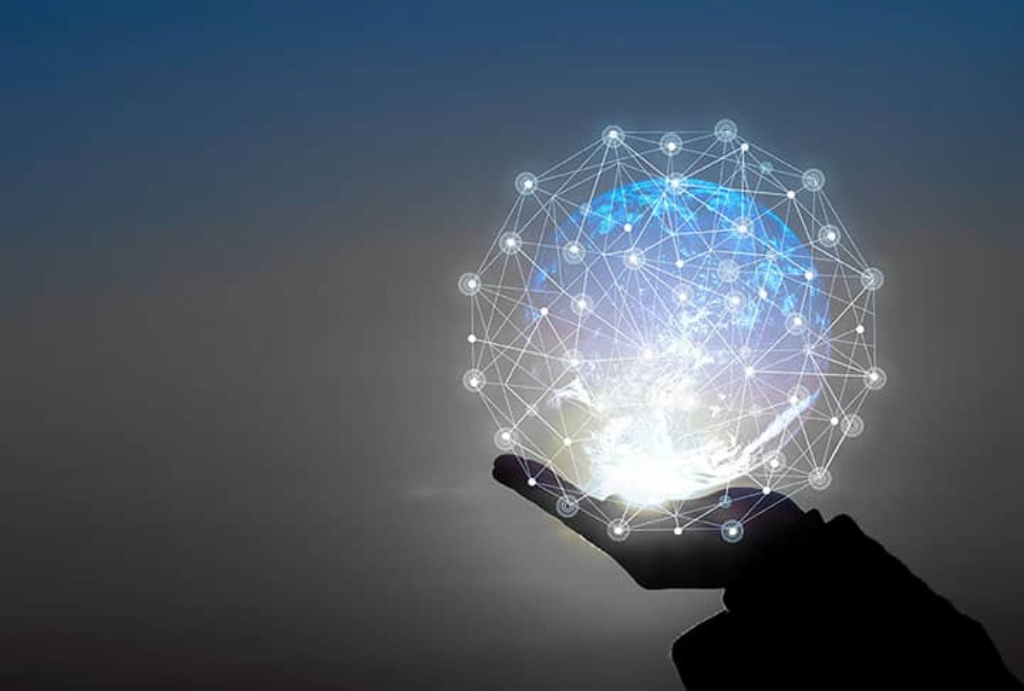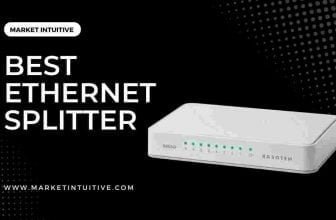What’s The Difference Between Broadband And Fibre? Complete Guide 2023

The Internet has revolutionised how you communicate, work, and entertain yourselves. However, many internet connections exist, so find the best for your needs. What’s the difference between broadband and fibre?
Broadband and fibre are both ways of connecting to the internet but differ in speed, reliability, and many things. Understanding the differences between these two can make an informed decision while selecting an internet connection that suits your needs.
In this article, you’ll explore the difference between broadband and fibre and help you decide which is right.
Difference Between Broadband And Fibre: Introduction
Broadband and fibre are distinct forms of internet connections, primarily distinguished by the technology employed to transmit data.
Broadband denotes a high-speed internet connection capable of transmitting data across various frequencies.
Fibre, referred to as fibre optic internet, uses slender strands of glass or plastic cables to transmit data using light pulses.

A clear understanding of the distinction between broadband and fibre is essential for individuals and businesses to make well-informed decisions regarding their internet connectivity.
Fibre optic internet provides notably faster and more reliable speeds than conventional broadband technologies.
This knowledge empowers users to choose the most suitable option based on their specific needs, whether it involves streaming high-definition content, engaging in online gaming, or utilising bandwidth-intensive applications.
Comparison Table: Difference Between Broadband And Fibre
Key Factors | Broadband | Fibre |
Kinds Of Technology | Fibre to the Cabinet (FTTC) and Fibre to the Premises (FTTP) | Fibre optic leased line and Point to point leased line |
Speed | Fibre to the Cabinet – 76 Mbps download speed and 19 Mbps upload speed Fibre to the Premises – 1 Gbps download speed and 40 Mbps upload speed | 10 Gbps download speed and 10 Gbps upload speed |
Reliability | A broadband connection is less reliable than a fibre broadband | Fibre broadband is more reliable than a broadband connection |
Network | Copper circuits are utilised in normal broadband | Fibre optic cables are utilised in fibre-type broadband for sending the data |
Uses | Supports a small number of users on VoIP & cloud apps, email, and web browsing | Supports all business applications and businesses of all sizes, VoIP & cloud apps |
Fault fix times | Up to 2 business days | Within 5 hours of reporting |
Cost | Broadband setup cost is less than a fibre broadband connection | The cost of fibre connection setup is expensive |
Difference Between Broadband And Fibre: Defining Broadband and Fibre

Broadband is a widely used term to describe an always-on, high-speed internet connection surpassing traditional dial-up access speed.
A broadband connection, whether Fibre to the Cabinet (FTTC) or Fibre to the Premises (FTTP), relies on shared infrastructure for data transmission. In simple terms, when you download a file, that data travels down a pipeline alongside numerous files meant for various individuals.

Consequently, although your connection may be able to download at 80 Mbps, achieving this speed may only sometimes be possible, especially during peak usage periods or times of high network activity.
Several factors influence the choice of broadband technology, including your location (urban or rural), how broadband internet access is bundled with other services (like voice telephone and home entertainment), pricing, and availability.
Data transmission in fibre optics occurs through light waves, also known as photons, which travel through a fibre optic cable. This causes incoming light to bend at various angles. The fibre optic cable consists of a core and cladding, both made of glass, each with a distinct refractive index.
In fibre optics transmission, it might be necessary to employ repeaters at regular intervals to refresh or amplify the signal as it travels. These repeaters regenerate the optical signal by converting it into an electrical signal, processing it, and then transmitting it again as an optical signal.
Presently, fibre optic cables can support signals up to 10 Gbps. Typically, the cost of a fibre optic cable increases as its bandwidth capacity rises.
When you have a fibre optic leased line, the fibre pipeline exclusively serves your business, ensuring your data doesn’t contend with other users. As a result, your data reaches its destination quickly with enhanced security. With a fibre optic leased line, you receive the exact speed you pay for, ensuring optimal performance.
Difference Between Broadband And Fibre: Speed
The broadband connection offers high-speed internet, but its speed is comparatively slower compared to a fibre connection. The Fibre to the Cabinet has a 76 Mbps download speed and 19 Mbps upload speed. Fibre to the Premises has a 1 Gbps download speed and 40 Mbps upload speed.
While the broadband connection provides fast-speed internet, its speed is slower than fibre.
Fibre uses optical fibre for data transmission and offers extremely fast internet speeds. Compared to a traditional broadband connection, fibre is significantly faster.
Fibre has a 10 Gbps download speed and 10 Gbps upload speed.
The utilisation of optical fibre for data transmission makes the fibre broadband connection incredibly fast. In comparison to a regular broadband connection, fibre broadband exhibits superior speed.
Difference Between Broadband And Fibre: Bandwidth

Businesses that depend heavily on online services require fast internet connectivity to facilitate their operations. Fibre optics cater specifically to companies that offer high-speed internet without compromising bandwidth.
Unlike broadband services, fibre optics can sustain greater bandwidth consistently, making them a more reliable option for businesses requiring uninterrupted and efficient internet connectivity..
Difference Between Broadband And Fibre: Performance
A broadband connection employs copper circuits and is generally less reliable than a fibre broadband connection.
On the other hand, fibre broadband is known for its higher reliability than a regular broadband connection. This increased reliability is due to the use of fibre optic cables for data transmission in fibre-type broadband.
The reliability level can differ among providers, but broadband is considered fairly dependable overall. Nevertheless, it is less reliable than a fibre leased line due to shared infrastructure and multiple potential points of failure.
Difference Between Broadband And Fibre: Price

The setup cost for broadband is lower compared to a fibre connection.
In contrast, the setup cost for a fibre connection is higher. Fibre connections are less cost-effective due to the higher cost of fibre cables, contributing to the overall expense of setting up a fibre connection.
Difference Between Broadband And Fibre: Agreement
For Beaming customers using broadband, reported problems are typically resolved within two working days.
Choosing a fibre leased line ensures nearly guaranteed uptime of 24x7x365. In the event of an issue, the target fix time is within 5 hours from when it is reported.
Difference Between Broadband And Fibre: Security
When individuals utilise internet services, their utmost concern is safeguarding the network’s security.
Broadband services are susceptible to attacks, making it easier for malicious actors to target the network and engage in harmful activities. Conversely, dedicated fibre connections require attackers to exert more effort to breach the network’s security.
Difference Between Broadband And Fibre: Installation And Equipment
Most businesses in the UK already have the infrastructure for Fibre to the Cabinet broadband, allowing them to establish their connectivity swiftly, often within a few days.
However, availability depends on whether providers have installed the necessary infrastructure for Fibre to the Premises. Consequently, certain situations might wait long before FTTP becomes accessible in your area.
Your location and existing infrastructure in your area primarily influence the installation time for a fibre optic leased line. On average, the lead time for installation is approximately 30 working days, although this may vary.
How To Select The Right Connection For Your Needs

You can select the right connection for your needs by considering these factors:
- Speed – A standard broadband connection might suffice if speed is not a significant concern and you only require minimal internet capabilities. However, opt for fibre broadband if you need more than just a few Mbps and desire enhanced performance.
- Performance – Fiber is known for its superior reliability compared to other types of broadband. Each fibre connection has a dedicated line, ensuring consistent speeds and uninterrupted service without fluctuations.
- Price – Generally, fibre is more costly than other broadband alternatives due to the higher expenses of building a fibre network. Constructing a fibre network involves starting from scratch since it requires installing a new type of cable that must be laid underground.
- Bandwidth – Fiber broadband offers a larger bandwidth compared to traditional broadband. Additionally, it provides an uncontended connection, ensuring that your broadband line is exclusively dedicated to you. This means you are not sharing the network with anyone else, ensuring optimal performance and reliability.
Similar Tutorials Types to Check Out
- 7 Best Fibre Broadband Deals In The UK Market: Fibre broadband is the way to go if you’re looking for lightning-fast download speeds and a stable connection. Selecting the right fibre broadband for your needs can be overwhelming. However, this article will help you explore the best fibre broadband deals on the market
- 15 Best Broadband And TV Deals In The UK Market: In today’s digital age, reliable broadband and TV service are necessary. Before committing to a digital TV and broadband service, clearly understand the competitive landscape. In this article, you’ll explore the best broadband and TV deals
- 10 Best Broadband Deals With Free Gifts In The UK: Are you looking for great broadband deals with free gifts? Today, you can grab great broadband deals with free vouchers, reward cards, gadgets, and more. This article has everything about broadband deals with free gifts and how to claim them
- Comparing The 10 Best Broadband Providers In The UK: Do you need a reliable broadband provider to offer fast and reliable service? Ensure that you get the fast speeds and the highest quality of service. Today, I will discuss the best broadband providers in the UK
FAQs On The Difference Between Broadband And Fibre
1. Is fibre better than broadband?
Fibre optic cables can process more data, making them much faster than conventional broadband. Due to their higher speeds, they are particularly well-suited for streaming, downloading, and gaming across multiple devices.
2. Is fibre the same as broadband?
Although the broadband connection is fast but slower than the fibre connection, this is because fibre broadband uses optical fibre to transmit data, making it incredibly fast. Therefore, fibre broadband is faster than regular broadband.
Conclusion: Difference Between Broadband And Fibre
Broadband and fibre are great internet connections. While both technologies offer many of the same benefits, each type has unique pros and cons.
When you think of broadband, you probably think of internet connections that offer fast speeds and reliable data transfer.
Fibre offers faster speeds and greater reliability than traditional connections. It is also more environmentally friendly and costly to install than the older technologies.
You can choose between broadband and fibre on the basis of your needs and budget.
I hope this article on the difference between broadband and fibre sounds helpful!






